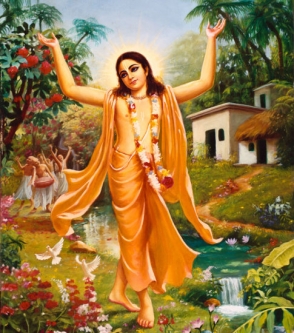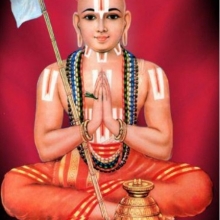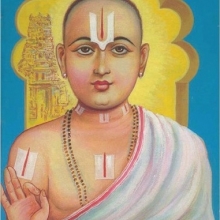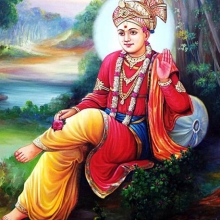Rāmkumār wanted Sri Ramakrishna to learn the intricate rituals of the worship of Kāli. To become a priest of Kāli one must undergo a special form of initiation from a
Haidakhan Babaji is considered among the few greatest spiritual teachers or Guru of the last century. He excelled not so much in any new teaching for the brains, but
The world-famous book “Autobiography of a Yogi” by Swami Paramahamsa Yogananda (January 5, 1893 – March 7, 1952), born Mukunda Lal Ghosh, now you can read it online.
"Nimbarka," said Lord Śiva, "at the edge of this village is a sacred bael forest. There, in that forest, the four Kumāras are absorbed in meditation. By their mercy you will receive transcendental knowledge, for they are your spiritual masters, and by rendering service unto them
Rāmānuja is well-known as the great philosopher and ācārya of the Śrī Vaishnava sampradāya and expounder of Viśiṣṭādvaita Vedanta or philosophy of qualified non-dualism, the famous author of Śrī bhāṣya - the legendary commentary on Vedanta Sūtras and several other classical
Murāri Gupta (fl. 16th century) was a noted Bengali Vaishnava poet, a contemporary and close disciple of Śrī Kṛṣṇa Caitanya , also known as Chaitanya Mahaprabhu (18 February 1486 – 14 June 1534), the founder and major inspiration of what is now known as Krishna Consciousness
Piḷḷai-lokācārya who preferred a solitary and tranquil residence moved to a temple of Lord Narasiṁha in the outskirts of Śrī Raṅgam and it was here that he delivered discourses on Dharma to all who would listen. He taught in a very simple and skilful manner which is reflected in
Swaminarayan (Svāmīnārāyaṇa, 3 April 1781 – 1 June 1830), also known as Sahajānand Swami, is the central figure in a modern tradition of Hinduism known as the Swaminarayan Hinduism, a form of Vaishnavism, founded and most popular in Gujarat state of India. Here, in the following





